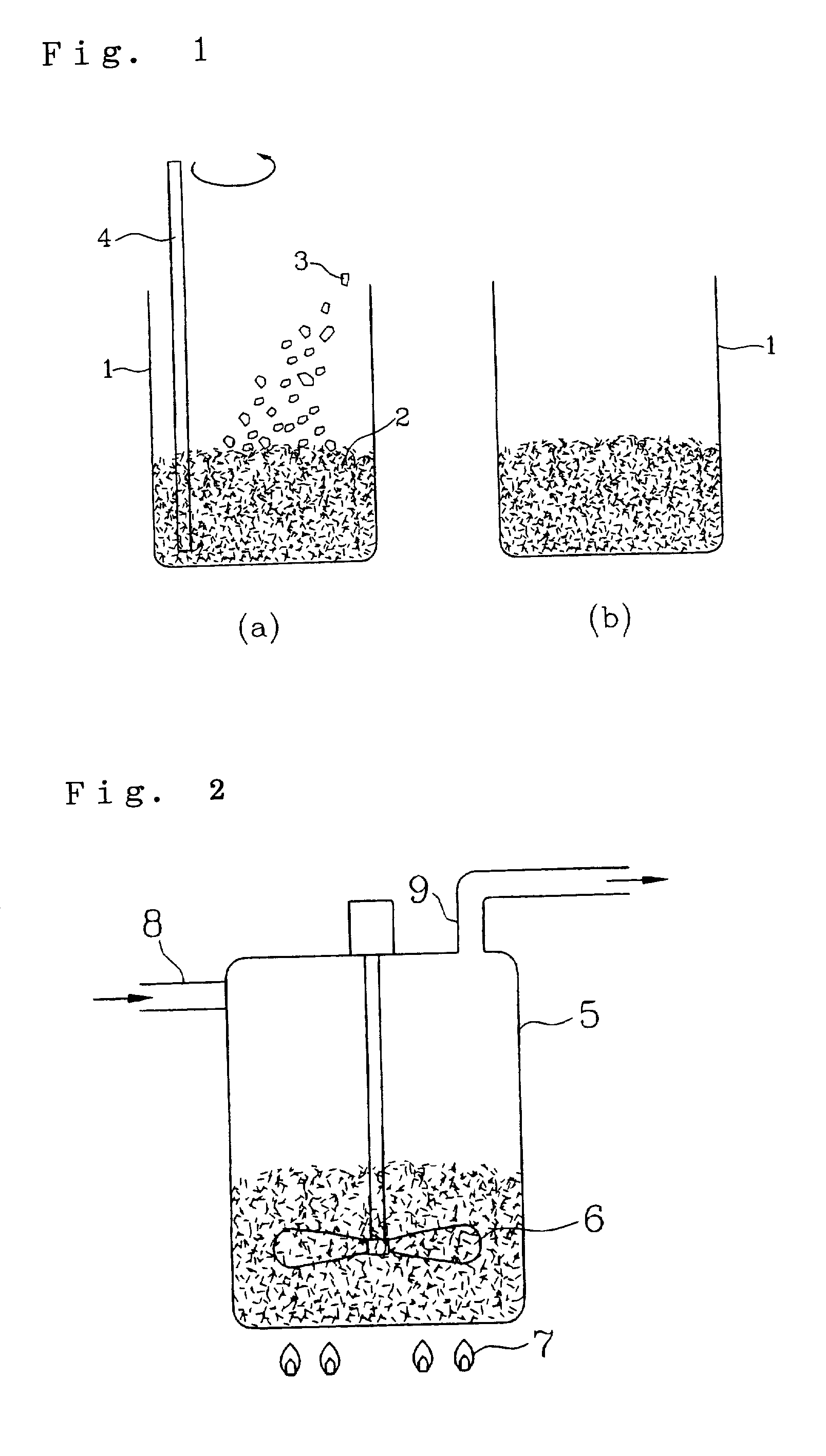Method for decomposing plastic
a plastic and decomposing technology, applied in the direction of sustainable manufacturing/processing, nuclear engineering, petrochemical industry, etc., can solve the problems of environmental pollution, difficult to perform plastic burning recently, and inability to generate toxic gas
Active Publication Date: 2002-12-05
OSADA GIKEN
View PDF6 Cites 2 Cited by
- Summary
- Abstract
- Description
- Claims
- Application Information
AI Technical Summary
Problems solved by technology
Conventionally, plastic has such problems that it is burnt to generate toxic gas or to have incomplete or partial combustion.
Burning plastic recently becomes hard to be performed due to and in view of energy-saving policies and global warming.
Besides, burying plastic in the ground cannot find any extra spaces for the purpose while causing a problem of environment pollution.
The crushing method for reusing plastic involves a quite troublesome crushing operation using a crusher or the like to make smaller plastic wherein plastic when mixing foreign objects, such as metal, causes malfunction of machine.
However, the crushed objects are large in size, and plastic and cement have poor adhesiveness between them, resulting in that blocks themselves are low in strength and cannot be usable equally to blocks provided conventionally.
The foregoing method introducing plastic wastes into a furnace has such problem that the resultant melt when formed into a usual molded article shows poor quality, which is inferred to be caused by an admixture or a mixed foreign object.
Moreover, thermoplastic that has cross-linking to some extent when molded is not usable to be mixed with a virgin material and remolded.
Hence, plastic is to be burnt at high temperatures, but burning plastic at high temperatures is hard to be performed by plastic itself and needs a large quantity of fuel uneconomicall
Method used
the structure of the environmentally friendly knitted fabric provided by the present invention; figure 2 Flow chart of the yarn wrapping machine for environmentally friendly knitted fabrics and storage devices; image 3 Is the parameter map of the yarn covering machine
View moreImage
Smart Image Click on the blue labels to locate them in the text.
Smart ImageViewing Examples
Examples
Experimental program
Comparison scheme
Effect test
 Login to View More
Login to View More PUM
| Property | Measurement | Unit |
|---|---|---|
| Temperature | aaaaa | aaaaa |
| Temperature | aaaaa | aaaaa |
| Temperature | aaaaa | aaaaa |
Login to View More
Abstract
A conventional method of pyrolytically decomposing plastic to make low-molecular compounds is poor in efficiency of use of energy due to high heating temperatures (at least 600° C. and 800° C. at maximum). The invention provides that a functional powder is heated to a predetermined temperature and pieces of plastic to be disposed are caused to be contacted with the heated powder, the functional powder including a powder which does in an aqueous solution state show alkalinity, and a photo-catalyst effect powder.
Description
[0001] 1. Field of the Invention[0002] The present invention relates to a method for decomposing plastic.[0003] 2. Prior Art[0004] Conventionally, plastic has such problems that it is burnt to generate toxic gas or to have incomplete or partial combustion. Burning plastic recently becomes hard to be performed due to and in view of energy-saving policies and global warming. Besides, burying plastic in the ground cannot find any extra spaces for the purpose while causing a problem of environment pollution.[0005] It is most preferable (and quite hard) to reuse (recycle) plastic under the foregoing circumstances. Nowadays, reusing plastic is mainly realized in such manners as crushing and melting again to form fibers or blocks, or introducing plastic wastes into a furnace.[0006] Another approach for reusing plastic has been hitherto proposed as that plastic is pyrolytically decomposed to become low-molecular and be reused. In detail, plastic is heated more than heat decomposition temper...
Claims
the structure of the environmentally friendly knitted fabric provided by the present invention; figure 2 Flow chart of the yarn wrapping machine for environmentally friendly knitted fabrics and storage devices; image 3 Is the parameter map of the yarn covering machine
Login to View More Application Information
Patent Timeline
 Login to View More
Login to View More IPC IPC(8): B29B17/00C10G1/10
CPCB29B17/00C10G1/10B29B2017/0496Y02P30/00Y02W30/62
Inventor OSADA, HIDEHARUSHIMABARA, TATSUTOSHI
Owner OSADA GIKEN
Features
- R&D
- Intellectual Property
- Life Sciences
- Materials
- Tech Scout
Why Patsnap Eureka
- Unparalleled Data Quality
- Higher Quality Content
- 60% Fewer Hallucinations
Social media
Patsnap Eureka Blog
Learn More Browse by: Latest US Patents, China's latest patents, Technical Efficacy Thesaurus, Application Domain, Technology Topic, Popular Technical Reports.
© 2025 PatSnap. All rights reserved.Legal|Privacy policy|Modern Slavery Act Transparency Statement|Sitemap|About US| Contact US: help@patsnap.com

